Jeep Avenger vs Renault Scénic - Differences and prices compared
Costs and Efficiency:
When it comes to price and running costs, the biggest differences usually appear. This is often where you see which car fits your budget better in the long run.
Jeep Avenger has a significantly advantage in terms of price – it starts at 21900 £, while the Renault Scénic costs 34600 £. That’s a price difference of around 12686 £.
In terms of energy consumption, the advantage goes to the Jeep Avenger: with 15.50 kWh per 100 km, it’s slight more efficient than the Renault Scénic with 16.60 kWh. That’s a difference of about 1.10 kWh.
As for range, the Renault Scénic performs clearly perceptible better – achieving up to 598 km, about 198 km more than the Jeep Avenger.
Engine and Performance:
Power, torque and acceleration say a lot about how a car feels on the road. This is where you see which model delivers more driving dynamics.
When it comes to engine power, the Renault Scénic has a clearly perceptible edge – offering 218 HP compared to 156 HP. That’s roughly 62 HP more horsepower.
In acceleration from 0 to 100 km/h, the Renault Scénic is a bit quicker – completing the sprint in 7.90 s, while the Jeep Avenger takes 9 s. That’s about 1.10 s faster.
In terms of top speed, the Jeep Avenger performs slightly better – reaching 194 km/h, while the Renault Scénic tops out at 170 km/h. The difference is around 24 km/h.
There’s also a difference in torque: Renault Scénic pulls to a small extent stronger with 300 Nm compared to 260 Nm. That’s about 40 Nm difference.
Space and Everyday Use:
Whether family car or daily driver – which one offers more room, flexibility and comfort?
Seats: offers more seating capacity – vs .
In curb weight, Jeep Avenger is convincingly lighter – 1180 kg compared to 1822 kg. The difference is around 642 kg.
In terms of boot space, the Renault Scénic offers clearly perceptible more room – 545 L compared to 380 L. That’s a difference of about 165 L.
In maximum load capacity, the Renault Scénic performs clearly perceptible better – up to 1670 L, which is about 393 L more than the Jeep Avenger.
When it comes to payload, Renault Scénic slight takes the win – 518 kg compared to 502 kg. That’s a difference of about 16 kg.
Who wins the race?
The Renault Scénic proves to be secures victory with a clear margin and therefore becomes our DriveDuel Champion!
Renault Scénic is the better all-rounder in this comparison.
 @ Renault Group Media
@ Renault Group Media
Renault Scénic
Costs and Consumption
View detailed analysis
Engine and Performance
View detailed analysis
Dimensions and Body
View detailed analysis
Jeep Avenger
The Jeep Avenger shrinks Jeep's boxy, adventurous styling into a city-friendly electric crossover that looks just as at home on tight streets as it does on muddy weekend lanes. It's a savvy pick for drivers who want go-anywhere attitude without the truck-size ego — practical inside, lively around town and ready to tackle a bit of rough stuff when the mood strikes.
details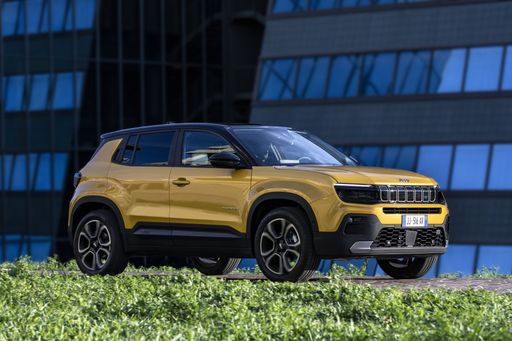 @ Jeep / Stellantis Media
@ Jeep / Stellantis Media
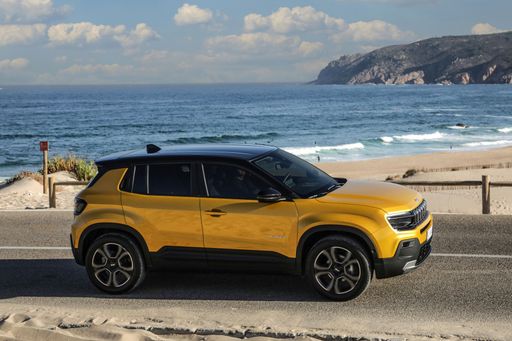 @ Jeep / Stellantis Media
@ Jeep / Stellantis Media
 @ Jeep / Stellantis Media
@ Jeep / Stellantis Media
 @ Jeep / Stellantis Media
@ Jeep / Stellantis Media
 @ Jeep / Stellantis Media
@ Jeep / Stellantis Media
Renault Scénic
The Renault Scénic is a quietly clever family MPV that balances everyday practicality with unexpected flair, offering a roomy, flexible cabin that makes school runs and weekend escapes less of a chore. It won't dazzle like a sports car, but its composed ride, sensible tech and thoughtful storage solutions make it a superbly pragmatic choice for buyers who prefer substance with a wink.
details @ Renault Group Media
@ Renault Group Media
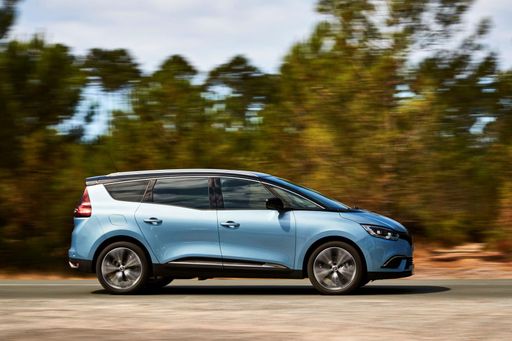 @ Renault Group Media
@ Renault Group Media
 @ Renault Group Media
@ Renault Group Media
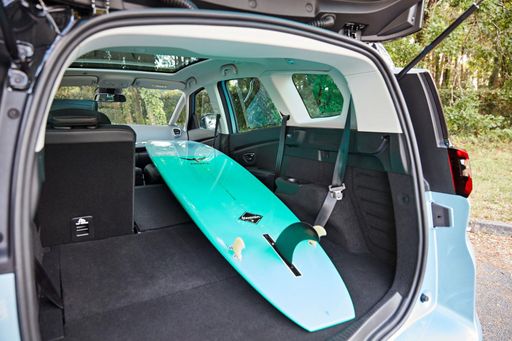 @ Renault Group Media
@ Renault Group Media
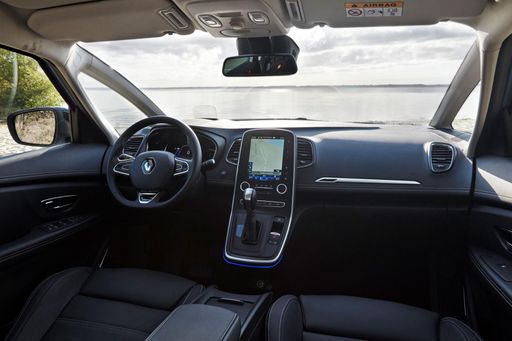 @ Renault Group Media
@ Renault Group Media
 @ Jeep / Stellantis Media
@ Jeep / Stellantis Media
|
 @ Renault Group Media
@ Renault Group Media
|
|
|
|
Costs and Consumption |
|
|---|---|
|
Price
21900 - 36900 £
|
Price
34600 - 44000 £
|
|
Consumption L/100km
4.9 - 5.7 L
|
Consumption L/100km
-
|
|
Consumption kWh/100km
15.50 kWh
|
Consumption kWh/100km
16.6 - 17.5 kWh
|
|
Electric Range
400 km
|
Electric Range
420 - 598 km
|
|
Battery Capacity
51 kWh
|
Battery Capacity
-
|
|
co2
0 - 129 g/km
|
co2
0 g/km
|
|
Fuel tank capacity
44 L
|
Fuel tank capacity
-
|
Dimensions and Body |
|
|---|---|
|
Body Type
SUV
|
Body Type
SUV
|
|
Seats
5
|
Seats
5
|
|
Doors
5
|
Doors
5
|
|
Curb weight
1180 - 1520 kg
|
Curb weight
1822 - 1927 kg
|
|
Trunk capacity
325 - 380 L
|
Trunk capacity
545 L
|
|
Length
4084 - 4088 mm
|
Length
4470 mm
|
|
Width
1776 mm
|
Width
1864 mm
|
|
Height
1527 - 1541 mm
|
Height
1571 mm
|
|
Max trunk capacity
1218 - 1277 L
|
Max trunk capacity
1670 L
|
|
Payload
494 - 502 kg
|
Payload
514 - 518 kg
|
Engine and Performance |
|
|---|---|
|
Engine Type
Electric, Petrol, Petrol MHEV
|
Engine Type
Electric
|
|
Transmission
Automatic, Manuel
|
Transmission
Automatic
|
|
Transmission Detail
Reduction Gearbox, Manual Gearbox, Dual-Clutch Automatic
|
Transmission Detail
Reduction Gearbox
|
|
Drive Type
Front-Wheel Drive, All-Wheel Drive
|
Drive Type
Front-Wheel Drive
|
|
Power HP
100 - 156 HP
|
Power HP
170 - 218 HP
|
|
Acceleration 0-100km/h
9 - 10.6 s
|
Acceleration 0-100km/h
7.9 - 8.6 s
|
|
Max Speed
150 - 194 km/h
|
Max Speed
150 - 170 km/h
|
|
Torque
205 - 260 Nm
|
Torque
280 - 300 Nm
|
|
Number of Cylinders
3
|
Number of Cylinders
-
|
|
Power kW
74 - 115 kW
|
Power kW
125 - 160 kW
|
|
Engine capacity
1199 cm3
|
Engine capacity
-
|
General |
|
|---|---|
|
Model Year
2023 - 2025
|
Model Year
2025
|
|
CO2 Efficiency Class
A, D, C
|
CO2 Efficiency Class
A
|
|
Brand
Jeep
|
Brand
Renault
|
What drivetrain options does the Jeep Avenger have?
Available configurations include Front-Wheel Drive or All-Wheel Drive.
The prices and data displayed are estimates based on German list prices and may vary by country. This information is not legally binding.
